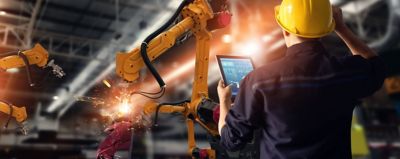An air treatment system is a combination of equipment designed to ensure that the air entering a compressed air system is clean and free from impurities such as debris, oil, and dirt.
Compressed air treatment is essential for maintaining the efficiency and longevity of air compressors and the systems they support.
By removing impurities such as water, oil, rust, and pipe scale, compressed air treatment systems ensure that the air used in various applications is clean and free from contaminants.
This blog post will delve into the importance of compressed air treatment, the key components involved, and how to choose and maintain the right equipment for your needs.
Why is Compressed Air Treatment Necessary?
Compressed air treatment is essential for several reasons:
Protecting Equipment: Impurities like water, oil, and rust can cause significant damage to air compressors and other equipment. By treating compressed air, you can prevent corrosion, wear, and tear, thereby extending the lifespan of your machinery.
Ensuring Product Quality: In industries such as food and pharmaceuticals, the quality of compressed air directly impacts the final product. Contaminated air can lead to product defects and safety concerns.
Improving Efficiency: Clean, dry air ensures that pneumatic tools and systems operate efficiently, reducing energy consumption and operational costs.
Compliance with Regulations: Many industries have strict regulations regarding air quality. Proper air treatment helps businesses comply with these standards, avoiding legal issues and fines.
Key Components of an Air Treatment System
An effective air treatment system comprises several components, each playing a vital role in ensuring the purity and quality of compressed air.
Air Compressor Dryers
Air compressor dryers are crucial in removing moisture from compressed air. There are three main types of air dryers:
Refrigeration Dryers: These dryers use refrigeration to cool the air, causing moisture to condense and be removed. They are ideal for general-purpose applications.
Desiccant Dryers: These dryers use desiccant materials to absorb moisture from the air. They are suitable for applications requiring extremely dry air.
Filters
Filters are used to remove solid particles, oil aerosols, hydrocarbons, odors, and vapors from compressed air. There are various types of filters, including coalescing Filters. These filters remove oil aerosols and fine particles.
Oil/Water Separators
Oil/water separators are essential for removing oil and water from compressed air. They work by splitting the oil and water, allowing both to be disposed of correctly. This process is crucial for preventing environmental contamination and complying with regulations.
Condensate Drains
Condensate drains remove liquid condensate from the compressed air system. They are necessary at all separators, filters, dryers, and receivers to prevent the overload of air dryers and damage to end-use equipment.
Cyclone Condensate Separators
Cyclone condensate separators use centrifugal motion to force liquid water out of compressed air. They are highly effective in removing bulk water and are often used as a pre-treatment step before air dryers.
Choosing the Right Air Treatment Equipment
Selecting the right air treatment equipment depends on several factors, including:
Application: Different applications have varying air quality requirements. For example, the food industry requires extremely clean air, while general manufacturing may have less stringent requirements.
Compressor Type: The type of compressor you use will influence the choice of air treatment equipment. Consult with an expert to ensure compatibility.
System Size: The size of your compressed air system will determine the capacity and type of equipment needed.
Budget: While it's essential to invest in quality equipment, it's also important to consider your budget. Look for energy-efficient solutions that offer long-term savings.
Maintenance of Air Treatment Systems
Regular maintenance is crucial to ensure the optimal functioning of your air treatment system. Here are some maintenance tips:
Schedule Regular Inspections: Conduct inspections at least twice a year to identify and address any issues early.
Replace Filters: Replace filters regularly to maintain air quality and system efficiency.
Check Drains: Ensure that condensate drains are functioning correctly to prevent water buildup.
Monitor Performance: Keep an eye on system performance and address any deviations promptly.
Frequently Asked Questions
The key pieces of equipment include air dryers, filters, oil/water separators, condensate drains, cyclone condensate separators, activated carbon towers, and nitrogen generators.
Choosing the right equipment depends on factors such as application, compressor type, system size, and budget. Consulting with an expert can help you make the best decision.
Regular maintenance is essential. Schedule inspections at least twice a year and replace filters and other components as needed.
Get tailored advice
Still have questions after reading? Our expert is ready to help you make sense of it all and guide you to the best solution.
Write to an Expert Today – Get the answers you need.






